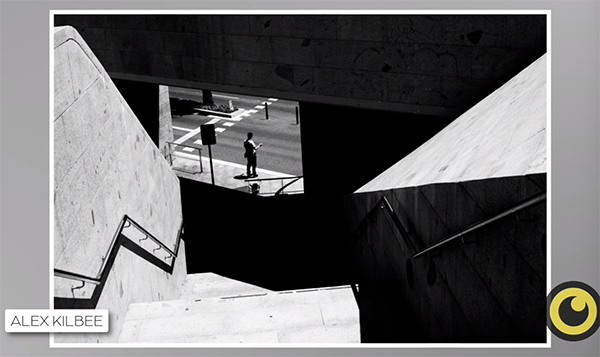On arrival at The Bristol Hotel guests may be surprised at the austere exterior and close proximity of a public multi-storey car park. Its position on Prince Street, Queen Square means the hotel is easily accessible by car and residents in the hotel pay discounted charges for the car park (£16 for 24 hours at the time of writing).
There is also direct access between the two. The building occupied by The Bristol Hotel was originally a motel and was built here in 1966 before the redevelopment of the area around it.
The honeycomb concrete frontage of the car park is in the style of the Modern architectural movement which has earned it recognition as a Grade II listed building. At the back of the hotel, residents can walk straight out onto a small cobbled Narrow Quay by Bristol’s historic floating harbour. A unique setting in the busy city centre of Bristol.
Who for
The Bristol Hotel, part of the part of the family-owned luxury hotel group The Doyle Collection, is perfect for that special city break and visitors to the city looking for a combination of luxury accommodation and ease of access to the main attractions in Bristol. Owners of small, well-behaved dogs are welcome to bring their pets with them. Adjacent to the hotel is its Meeting and Events Centre which is one of the leading business facilities in the South West of England which makes this hotel ideal for conferences, business meetings and private functions including weddings and other special celebrations.
Accommodation
There are 187 rooms and suites on six floors and those on the quayside have some of the best views across the harbour below and the city beyond. There are several different types of room from standard to deluxe but they are all beautifully furnished and have large-screen televisions, USB charging ports, tea and coffee-making facilities, bathrobe and slippers plus Temple Spa toiletries in the marble bathrooms.
Facilities

A Lounge and Reception at The Bristol Hotel in Bristol
Several cosy lounges on the ground floor of the hotel offer all guests the opportunity to meet up with friends and family to make plans and discuss the events of the day.
There is also a small gymnasium offering state of the art fitness equipment. Including two treadmills A front desk operates 24 hours of the day and friendly staff are always available to answer queries and provide information about the locality. The conference centre has a separate entrance, its own lounge area, a private bar and a large ballroom.
The nine meeting rooms boast a smart décor and the latest technology including flat screen TVs and integral projectors and the variety in size and capacity ensures suitability for every type of event. On-site parking is a real bonus here and complimentary Wi-Fi is also included.
Food and drink
The River Grille restaurant, on the ground floor by the quayside and overlooking the harbour serves breakfast, lunch and dinner. Prior to dining guests can enjoy a pre-dinner drink in the River Lounge and Bar just above the restaurant.

Breakfast Buffet at The Bristol Hotel in Bristol
Both the River Lounge and River Grille are open to both residents and non-residents who can enjoy the floor to ceiling windows that exploit the views of the harbour outside. A special treat, served in either venue is the G & Afternoon Tea. This includes classic components – cucumber sandwiches, scones with jam and cream and handmade miniature cakes – served on fine bone china from a Heritage Collection made in the UK especially for the Doyle Collection. A unique selection of teas has been specially blended to compliment this afternoon delight. Add a glass of champagne or a tea inspired gin-based cocktails to enhance this experience which available from Thursday to Saturday between 12:30pm and 4:30pm. Gluten free or vegan afternoon teas are available on request.
How much
The Bristol offers affordable luxury with rates starting at just £109 per room with breakfast included.
Book here
What’s Nearby?
In front of the hotel is Queen Square, a tranquil Georgian park surrounded by trees and cobbled streets and overlooked by impressive Georgian townhouses. It is a popular venue for outdoor theatre, concerts and other events. Next to the hotel is Arnolfini, Bristol’s International Centre for Contemporary Arts and located in Bush House, a large Grade II listed building. The centre offers a wide-ranging programme of contemporary arts and welcomes artists from around the world.
Close to the hotel is Pero’s Bridge that connecting the Narrow Quay with Millenium Square across the water. The latter is surrounded with bars, restaurants and close to attractions including the Bristol Aquarium and We The Curious.
At the end of the Narrow Quay is the Prince’s Bridge leading into the centre of the historic floating harbour. This harbour was created to combat the high tidal range of the River Avon and features over forty bridges spanning its waterways. Commercial operations ceased here in the 1970s when the working docks were relocated downstream at Avonmouth and Portbury. Since the 1980s the old sheds, warehouses and other buildings around the floating harbour have been regenerated to create a popular hub for leisure and tourism. Further along the quay Prince’s Bridge crosses over to Wapping Quay where the MShed (a museum that tells the story of Bristol), the tall ship Matthew and the ocean-going steel steamship SS Great Britain are based.
A major attraction in Bristol, the Clifton suspension bridge is easily accessible from the hotel thanks to good public buses. Several services have a stop right outside the hotel. Bristol is famous for popular events and festivals, in particular the annual Bristol Balloon Fiesta when around one hundred hot air balloons gather in the grounds of Ashton Court. Mass early morning and early evening assents are a popular feature of the three-day programme and thousands of spectators gather to enjoy Nightglow – when tethered balloons ‘perform’ to the loud beat of popular music. A fleet of shuttle buses (day tickets available online) ferries people to and from Ashton Court from Temple Meads Station stopping outside the Bristol Hotel en route.
Getting There
Bristol Temple Meads railway station is a thirty-minute walk away or a ten-minute taxi ride and there is a stop outside the hotel for the Airport Bus, A1, which operates a frequent service from the station. Bristol is also close to the M5, M4 and M32 motorways.
VERDiCT: The Bristol Hotel is one of very few hotels in Bristol on the harbourside and offers luxurious comfort and convenience that will enhance any stay in the city. For more information about attractions and events in the city, click here
The post The Bristol Hotel review, Bristol, England appeared first on The Travel Magazine.























